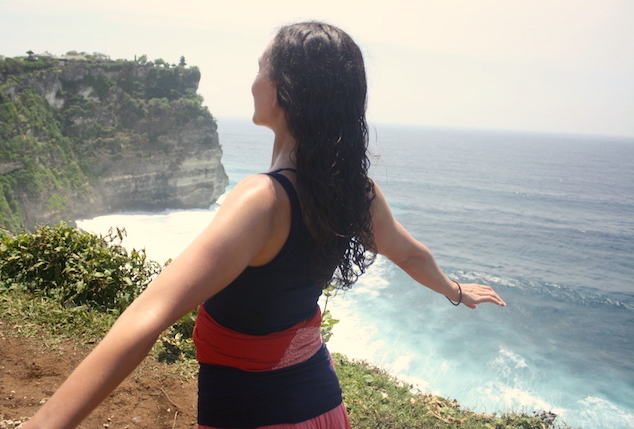“Let’s begin by bringing our awareness to sensations in the body…”
These are the words our embodiment guide calls out as we gather onto the floor in a circle around a beautifully candle-lit centerpiece. I close my eyes and begin to shift my awareness from the dramas and traumas of the day to the intricate details of my body.
What am I feeling right now?
Am I hot? Am I cold?
Is my heart racing? Is my mind racing?
Perhaps I should just follow my breath….
In and out…
In and out…
Hmm…now I feel the weight of my legs and the weight of my hips settling into the floor.
My lungs are relaxing, my shoulders are dropping…
My jaw is loosening,my eyes are softening…
I can feel my body begin to wind down.
I can feel my mind begin to wind down…slowly…slowly…until…
I arrive.
Here.
In this body.
In this moment.
Right now.
I love being in my body. It is a much yummier place to be than my mind. My mind is generally sharp and attentive and helpful for things like…math. But it also loves to critique and judge—especially when I’m tired.
My body, on the other hand, is generally gentler and kinder. When it feels like I’m ignoring it, it may jab me or send some unpleasant sensations my way. But otherwise, it politely asks for what it needs as long as I’m present enough to listen.
Therein lies the point of embodiment practices: to be present enough to listen to what our bodies have to tell us.
And—the bonus of it all—is that the feeling of truly being in our bodies is a pulsating, life-affirming sensation that can provide a feeling of moksha (freedom) with additional physical, mental and emotional benefits to boot.
Here is the formula I use to access embodiment and regularly experience this feeling:
1. Daily Sitting
This practice is simply sitting in a chair or on a cushion and feeling sensations in our body.
I would call this “meditating” instead of sitting, however I know that term can be intimidating. Sometimes meditating conjures up a lot of pressure to “do it right” in order to get the “desired effect,” resulting in a lot of squabbling about what kind of meditation to practice. Vipassana? Transcendental? This should not be the concern. The desired effects of sitting for embodiment purposes are to feel our bodies—anywhere from a few minutes to a few hours—and to listen. That’s it.
A suggested method for feeling the body is to do a body scan. Begin by asking ourselves, “Can I feel my [insert body part]?” and start scanning parts of the body beginning at the head and ending at the feet. No matter where we start the scan, we always want to end at the feet or the heart for grounding purposes.
2. Weekly Dance
This is not a choreographed, “I’m worried about technique” dance or “I’m concerned about what I look like to everybody else” dance. It’s about flailing around, belting out Prince lyrics and “I’ll dance like a total spaz if I want to” movement.
It’s being in our bodies without thinking about being in our bodies.
It’s paying attention to the expansion of our arms and gyration of our hips, but not being attached to those movements.
It’s allowing ourselves to fully succumb to music and let it move us. Because when our bodies move, our minds are free. When our minds are free, that’s when we experience moksha.
3. Monthly Bodywork
As an Ayurvedic Practitioner trained in Ayurvedic body therapies, I’ve seen the power that healing touch has on my clients. The physiological benefits, such as de-stagnation of lymph in an Ayurvedic massage, are impressive on their own; yet it’s the mental and emotional benefits that are note-worthy.
In bodywork, we are being cared for in a nurturing space, and we are feeling our own bodies through the power of receptivity. All we do is surrender and receive. The rest is magic.
Having an embodiment practice can be the difference between living life on autopilot and truly being alive and present for each moment we’re experiencing. For me, this is of the utmost importance because I know that to live life to the fullest, I would rather be right here, right now than anywhere else.
Author: Suzanne Mansell
Image: Author’s own.
Editor: Nicole Cameron


 Share on bsky
Share on bsky





Read 0 comments and reply